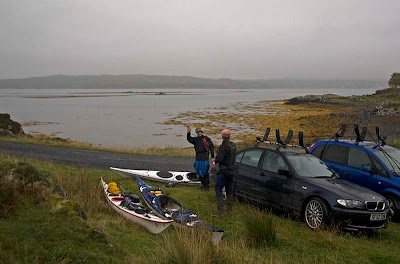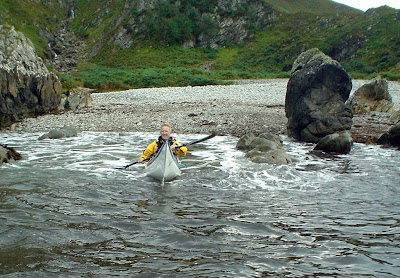
It was a relief when the rain stopped. We were by now famished and we were able to enjoy our evening meal in the dry.

After a post prandial Guinness, I decided to climb a hill to get a photo of our little bay. The colours of the bronze and gold autumn bracken and the turquoise water over the white shell sand beach leaped out of the surrounding landscape of gray rock and sky.

Then I crested the ridge. To the west, the clouds were breaking and the mists were curling and lifting round the Sgurr of Eigg which rose out of the burnished gold of the Sea of the Hebrides.

As if this was not enough, the clouds began to lift from the mountainous isle of Rum, which lies beyond Eigg. Its mountain tops have dreamy names like Sgurr nan Gillean, Ainshval, Trollaval, Askival and Hellival. Seeing them floating above a sea of cloud told us we had truly arrived in sea kayaking heaven.
13/09/2008


























